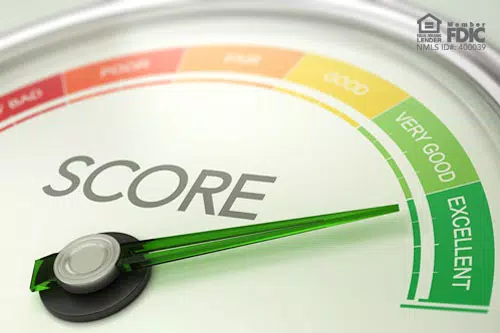Financial institutions use your credit score when reviewing your request for a new credit card, line of credit, mortgage, and other financial products. Your credit report helps to convey your past use of credit and can be a factor in the approval of the loan application.
What Lenders See
Lenders access your credit history, which contains a detailed listing of your previous and current credit accounts. If another lender has pulled your credit report to pre-qualify credit, this will also show up. This information will be visible in the report if late payments or accounts have been reported to collection agencies. Public records, which may include bankruptcies and foreclosures, are also listed.
A lender will review the credit information against allowable underwriting policies to determine if they can extend an offer of credit. A type of credit score used widely by lending institutions is the FICO® Score, created by Fair Isaac Corporation. FICO® Scores generally range between 300 and 850.
How a Credit Score Is Computed
According to myFICO.com, performance under five general categories makes up a credit score with each having an associated weight. Here are the percentage weights for the FICO® score:
- Payment history – 35%
- Credit utilization – 30%
- Length of credit history – 15%
- New credit – 10%
- Credit mix – 10%
From these criteria, you can see that your payment history and credit utilization influence your credit score most. These two areas are generally the key to improving your credit score.
Access Your Credit Report
Your credit report is available from the three national credit bureaus: Experian, TransUnion, and Equifax. You can request them for free once a year per credit bureau.
Many services will provide you with an annual copy of your credit report for free, like annualcreditreport.com. Remember that a credit score isn’t included in the report for some of these providers. Be proactive in reviewing your credit history for mistakes and contact the credit bureau timely for any errors found.
Accessing Your Credit Score
There are several different ways to access your credit score. Many major credit card companies offer the option to view it regularly.
There are also credit score services that offer to provide your credit score for free or if you sign up for their credit monitoring service. Some of these paid services offer a free trial period. Verify the trial period if you don’t intend to continue with the service.
You can also buy your score from a credit reporting company. FICO® Credit scores can be purchased at www.myfico.com. Other services may be included or available in addition to your credit score, including identity theft monitoring and credit protection.
Another option is to contact a not-for-profit credit counselor. These counselors may be able to assist you in retrieving a copy of your credit report and review it with you.
Remember that FICO® scores are not the only credit score used by all institutions, and overall credit scoring and range requirements may vary. Scores also vary with each credit reporting agency, so be sure to research how each measures your creditworthiness.
If you would like a mortgage expert to explain how a FICO score can impact your application for a home loan, call 888-661-1982.
This is not intended to and does not constitute legal advice or financial / investment / tax advice. North American Savings Bank does not make any guarantee or other promise as to the results obtained. The consumer should consult a tax adviser for further information regarding the deductibility of interest and charges.




